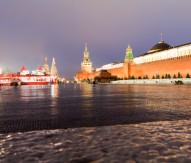
Montenegro’s major research investment
Building on FP7, international participation in Horizon 2020 from outside the EU is a key element of the next research framework programme. Under the international co-operation strategy, enlargement and neighbourhood countries are eligible for automatic funding.
Montenegro joined FP7 in 2008 and has been one of the most successful EU candidate and associated countries in terms of successful applications made and contributions received. The Balkan state received €2.2m as part of FP7 between 2007-2009, equal to Albania and Bosnia-Herzegovina combined.
Minister of Science Sanja Vlahovic explains Montenegro’s future innovative ambitions.
What steps can the Montenegrin government take in order to best take advantage of Horizon 2020 funding?
The Montenegrin government is taking several steps to take advantage of Horizon 2020 funding. First, the government adopted the Amendments to the Strategy on Scientific Research Activities in December 2012; this is in line with the new law on Scientific Research Activities (adopted in 2010) and new instruments for developing the Montenegrin scientific research system. These goals and instruments are defined in accordance with Europe 2020.
The government also signed a loan agreement with the World Bank in February 2012. The loan will fund the Higher Education and Research for Innovation and Competitiveness Project (HERIC), worth $15.98m (~€12.52m) and implemented by the Ministry of Science and the Ministry of Education. The most important results under the Science component, the Centre of Excellence and the Collaborative Research Grants Programme, will significantly improve the country’s research infrastructure and the quality of research teams in Montenegro; they will be more prepared for Horizon 2020.
The government has also adopted a revised strategic plan with the aim of planning and developing Montenegro’s first science and technology park. The STP will integrate entrepreneurial, innovative, scientific and industrial capacities and open new opportunities for collaboration between science and industry.
Montenegro has already expressed an interest to be involved in Horizon 2020. Representatives from the European Commission and the Ministry of Science have held meetings relating to the new research framework programme. The Ministry of Science is also working to improve the methodology for nominating the National Contact Points (NCPs) for Horizon 2020 and to harmonise it to the minimum standards.
Montenegro had a much higher applicant and funding success rate under FP7 compared to other Balkan states. What attributes does Montenegro have that contributed to this achievement?
After signing the memorandum of understanding on the association of Montenegro to FP7, the ministry set up the NCP structure and nominated the members of the FP7 programme committees, which started with their activities immediately. Another important step was to also establish the Ministry of Science as a separate government department (previously it was the Department for Science within the Ministry for Education and Science). The government has also strengthened the NCP structure with a new team and consequently, science and research, and FP7 in particular, received greater promotion and visibility in Montenegrin society.
The fact that contact persons were readily accessible to provide all the information required on FP7 and to help with application procedures, not only through e-mails and telephone, but also in face-to-face, was very important for improving the quality of applications. The NCPs also developed extensive mailing lists with almost all members of the Montenegrin scientific community and consequently it was easy to reach relevant stakeholders.
How vital is Horizon 2020 funding in helping Montenegro invest in its national innovation, research and development?
In the amendments to the national strategy for scientific-research activities, the goals relating to the level of investment in R&D has been repositioned with a view of increasing the competitiveness of the domestic scientific research community. This is also in accordance with the commitment to achieve the goals with regard to investment in R&D, as defined at the EU level.
As Horizon 2020 will focus funds that will reflect the priorities of the Europe 2020 Strategy, these priorities have been incorporated into the amendments to the national strategy. Participation in Horizon 2020 will involve both scientific-research institutions and SMEs that will develop innovative products, services and processes. Participation will consequentially increase knowledge in particular fields and motivate institutions and businesses to invest further in R&D at a national level.
How would you define success for Montenegro in Horizon 2020?
Considering the Government of Montenegro has adopted new instruments to strengthen research capacities, excellent research teams and R&D investment, we strongly believe that Montenegro will have a high success rate in Horizon 2020.
Knowledge, skills and co-operation achieved through FP7 are a precondition for successful participation in Horizon 2020. The provisional closure of Chapter 25: Science and Research, confirmed that Montenegrin legislation in this field is harmonised with the EU acquis, which is a great encouragement for Montenegro’s participation in Horizon 2020 and future membership of the EU.
Sanja Vlahovic

